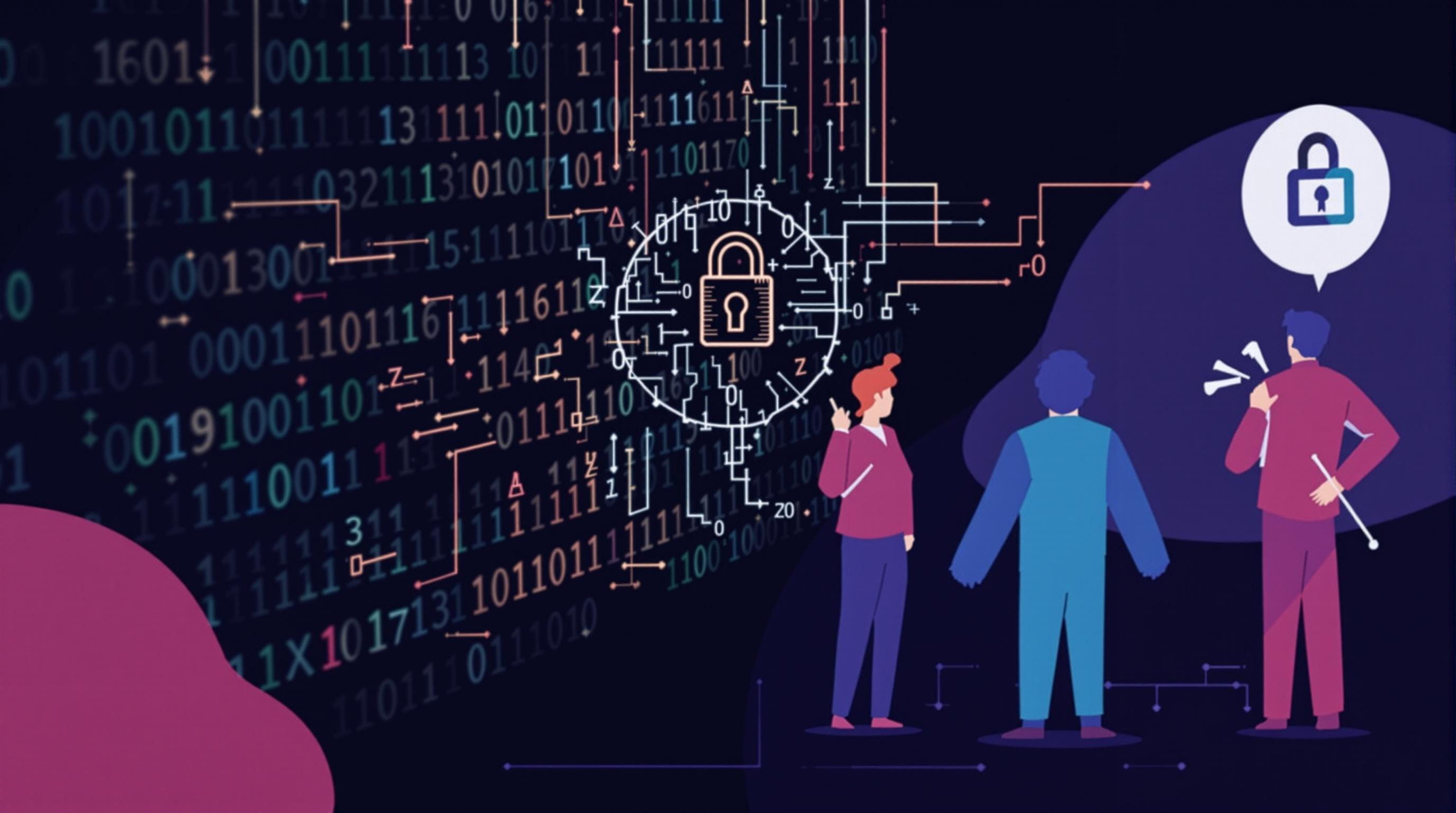Related Articles
- When Ancient Trade Routes Resurface: Unexpected Lessons for Modern Commerce and Global Economic Resilience
- When Artifacts Become Currencies: The Intriguing Trade Between Antiquities and Emerging Markets
- Beyond Borders: Unconventional Partnerships Transforming Trade Strategies in the Age of Globalization
- The Rise of Shadow Economies: How Informal Trade Networks are Disrupting Global Market Structures
- Cryptocurrency and Society: Understanding the Hidden Costs of Digital Assets on Community Well-Being
- The Surprising Role of Cultural Narratives in Shaping Investment Choices and Financial Preferences
10 Unexpected Leadership Skills Drawn from Cryptography That Can Strengthen Team Trust and Enhance Communication Dynamics
10 Unexpected Leadership Skills Drawn from Cryptography That Can Strengthen Team Trust and Enhance Communication Dynamics
10 Unexpected Leadership Skills Drawn from Cryptography That Can Strengthen Team Trust and Enhance Communication Dynamics
1. Transparency through Encryption
In cryptography, the transparency of processes is crucial for understanding how information is protected. For leaders, fostering an environment where team members feel secure can enhance trust. By implementing systems that allow for data integrity while still being transparent about processes, leaders can foster a culture of openness.
Cryptographically secure channels create confidence that messages remain confidential. This principle can translate into leadership by ensuring that team members are clear on decision-making processes, which minimizes miscommunication. Just as cryptography requires clear keys for decryption, leaders must provide clear paths to understanding.
Fostering transparent communication, where each team member understands their role and the rationale behind choices, builds a solid foundation for trust. This can improve overall morale and commitment, akin to how cryptography relies on transparency to build security in data sharing.
2. Adaptability in Strategy
Cryptography is ever-evolving, adapting to new threats and challenges; similarly, leaders must remain agile in their strategies. An effective leader recognizes the need to pivot in response to changing team dynamics, market pressures, or unexpected obstacles. This adaptability fosters resilience within the team.
Learning from cryptographic methods like the shift from symmetric to asymmetric encryption highlights the necessity for leaders to iterate their strategies. Emphasizing a culture of flexibility empowers team members to adjust their roles and workflows, thus enhancing the overall efficiency of team communication.
Moreover, this adaptability builds a proactive organizational culture that anticipates change rather than merely reacting to it. Just as cryptographers must predict and mitigate risks, leaders who embody adaptability can create a supportive environment that welcomes innovation and improvement.
3. Collaboration for Security
In the world of cryptography, collaboration is key to creating secure systems. Various experts come together to design and evaluate algorithms, much like a successful team must collaborate to contribute their diverse skills. When leaders promote collaboration, they harness the full potential of their team.
Encouraging team brainstorming sessions mimics the collaborative effort seen in cryptographic development, where ideas are tested and refined. This not only leads to more effective solutions but also enhances communication dynamics by ensuring everyone feels heard and valued.
By drawing parallels between cryptographic teamwork and organizational collaboration, leaders can facilitate a more engaging environment. When team members work together towards common goals, they build trust, leading to improved communication and stronger relationships.
4. Problem-solving through Encryption Techniques
Cryptographic methods often require innovative solutions to complex problems. Leaders can adopt similar problem-solving techniques by encouraging critical thinking within their teams. Addressing challenges with a creative mindset builds confidence and strengthens team dynamics.
Cryptographers dissect problems to identify vulnerabilities; leaders should inspire their teams to analyze obstacles and develop creative solutions collaboratively. This not only sharpens communication skills but instills a sense of ownership among team members.
Encouraging creative problem-solving fosters an innovative mindset within the team. Leaders can cultivate an environment where individuals feel empowered to propose unconventional ideas, just as cryptographers often think outside the box to devise secure systems.
5. Attention to Detail
The field of cryptography relies heavily on meticulous attention to detail to prevent vulnerabilities. Leaders must adopt this quality to enhance oversight and improve communication. Every detail, from project oversight to interpersonal interactions, can significantly impact team dynamics.
A leader who notices minute details can preempt potential conflicts or misunderstandings. Similarly, cryptographers must account for every variable in their algorithms to ensure security. This parallel underscores the importance of vigilance in both fields for successful outcomes.
Attention to detail also promotes a culture of accountability where team members understand that their contributions matter. Making everyone aware of the importance of detail not only enhances trust but also leads to improved communication as team members become more conscious of the impact of their work.
6. Building Resilience for Change
Cryptography offers lessons in resilience, demonstrating how systems can withstand attacks. Leaders can promote this resilience by ensuring that teams are prepared for change and able to navigate uncertainties. In a landscape of continual transformation, adaptability is key.
By fostering a resilient mindset, leaders encourage team members to embrace change rather than fear it. This resilience can transform challenges into opportunities for growth, which mirrors the evolving nature of cryptographic standards. Teams that prepare for change can better communicate and adjust to new realities.
Building a resilient team has long-term benefits for communication and trust as members feel assured of their roles amidst uncertainty. A culture that adapts positively to change will naturally enhance overall team dynamics, much like secure cryptographic systems effectively evolve to combat new threats.
7. Trust through Verification
Verification in cryptography establishes the authenticity of information. For leaders, building trust through verification ensures that team members believe in each other's capabilities. This foundational trust can enhance collaboration and decrease friction within teams.
Effective leaders can implement systems that verify accomplishments and encourage peer recognition. Just as cryptographers must confirm the validity of encrypted messages, leaders should create mechanisms for recognizing team efforts and achievements to affirm each member's value.
When team members learn to trust each other through validated efforts, communication improves significantly. This trust fosters an environment where members feel safer to share ideas and take risks, leading to a more dynamic and productive team.
8. Ethical Considerations and Integrity
Ethics plays a significant role in cryptography, particularly in maintaining user confidentiality. Leaders are also tasked with upholding ethical standards, ensuring that their teams operate with integrity and fairness. This commitment to ethics strengthens team trust.
By leading with integrity, leaders set the tone for the organization, just as ethical considerations drive trustworthy encryption practices. When employees see their leaders committed to ethical behavior, they’re more likely to mirror these values in their communication and collaboration.
Emphasizing ethical standards cultivates a shared understanding of values among team members. Together, they can navigate challenging situations, knowing that integrity is a guiding principle, ultimately enhancing relationships and communication dynamics.
9. Cognitive Dissonance and Open-Mindedness
Cognitive dissonance arises when faced with conflicting beliefs, particularly in cryptographic evaluation of various methods. Leaders can harness this concept to encourage open-mindedness and adaptability within their teams. Embracing diverse viewpoints fosters thorough discussions and innovative solutions.
Similar to how cryptographers must reconcile differing methods to find the most effective solution, leaders should promote an environment where differing opinions are welcomed. This approach nurtures open communication, where team members learn to appreciate diverse perspectives.
Promoting open-mindedness leads to healthier discussions and ultimately to improved team dynamics. Team members who feel free to present varying opinions contribute to a more collaborative atmosphere, mirroring the cooperative spirit found in successful cryptographic development.
10. Continuous Learning and Improvement
In cryptography, the rapid pace of technological advancement necessitates continuous learning. Great leaders must embody a similar attitude, encouraging ongoing development for themselves and their teams. This commitment to improvement enhances communication and trust.
By fostering a culture of learning, leaders ensure their teams remain knowledgeable and adaptable, much like cryptographers who stay updated on the latest methodologies. Leaders must provide opportunities for professional growth, including workshops, training sessions, and mentorship.
Creating an environment where continuous learning is valued fosters engagement and collaboration. Team members feel empowered to share knowledge and insights, leading to enriched communication dynamics and stronger trust among colleagues.




